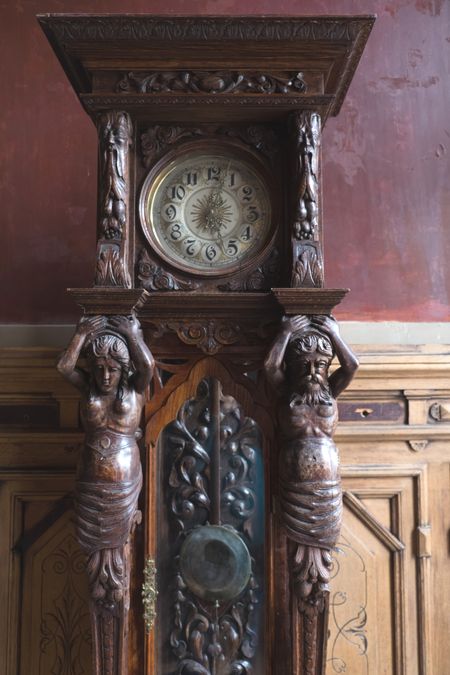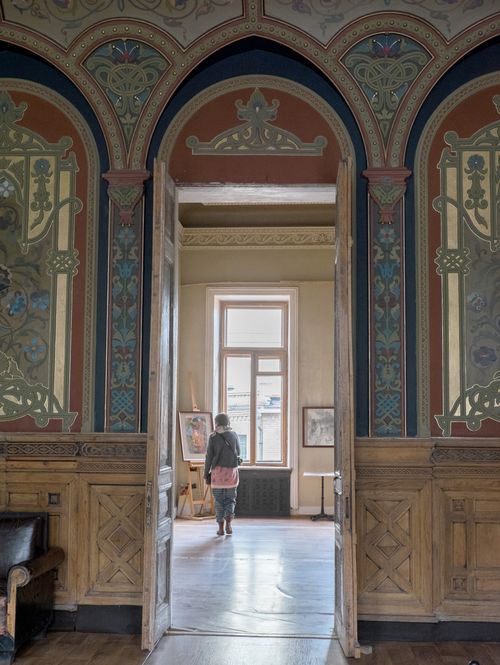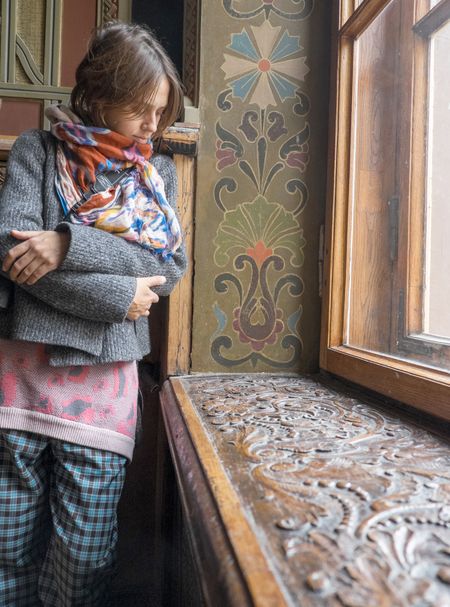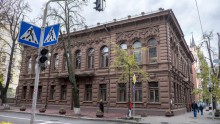The mansion of merchant Semen Mohylevtsev, who lived in the capital in the second half of the 19th and early 20th century, is now renowned for its hospitability. No wonder, for today it is the Chocolate House, an art center and branch of the Kyiv National Museum of Russian Art. It stands in the heart of Kyiv, at 17/2, Shovkovychna Street. Every Sunday the center houses concerts, and excursions are held virtually almost every day. The Day attended one of them to learn some curious facts about the mansion, which we now want to share with you.
A WEALTHY MAN’S “VISITING CARD”
Semen Mohylevtsev, old-believer and top-guild merchant, came from Briansk in Russia. He was born into a family of a timber merchant. At the age of 34 Mohylevtsev came to Kyiv to open a steam sawmill, first in the city. At that time Kyiv was one big development project, there was a steady and great demand for timber, and in 20 years the merchant found himself among the wealthiest citizens. It was then that he decided to build a hallmark house: a home and office in one.

Mohylevtsev purchased a parcel with a one-storied wooden house from the barons Uexkull-Gyllenbandt in 1898. The legendary Kyiv-based architect Volodymyr Nikolaiev took the commission. The construction lasted till 1901.
THE MANSION AND ITS OWNER’S LUCK
The mansion is a paragon of modern eclecticism. Resembling a Renaissance palazzo on the outside, inside the house blends several architectural styles. Picking a name was easy. Early in the 20th century some 20 cafes opened in Kyiv, which among other things served chocolate figurines. Kyivites, who were fond of the dessert, nicknamed the lavishly decorated, coffee-colored mansion the Chocolate House.

THE VICTORY OF BEAUTY. THE BOLSHEVIKS PAINTED OVER SEMEN MOHYLEVTSEV’S STUDY ROOM (IN THE PHOTO’S FOREGROUND) WITH GRAY, BUT, MANY YEARS LATER, RESTORERS RETURNED FAIRYTALE BIRDS AND FLOWERS INTO THIS CHAMBER – MASTERS HAD TO REMOVE ABOUT 20 LAYERS OF PAINT FROM THE WALLS AND ABOUT 14 FROM THE CEILING
The building survived the revolution, a succession of numerous regimes, and World War II. Mohylevtsev did not live to see those atrocities. He died a natural death in 1917, at a ripe old age in his seventies. He was lucky, in a way.
In 1934, the first floor underwent a reconstruction: the authorities wanted to house the Narkomat (department) of Foreign Affairs there. The remaining authentic details included only the five steps leading to the house, the ceiling, and several sculptural decorative details. The second floor is the result of Ukrainian restorers’ superhuman efforts. Two-thirds of the interior replicates the original.
MIRACLES UNDER 20 LAYERS OF PAINT
The heart of the house is Mohylevtsev’s front office, resembling a Russian fairy-tale palace. Floral ornaments and fantastical birds decorate the walls. However, an archive photograph reveals that the room used to be decorated with illustrations to Aleksey Tolstoy’s novel Prince Serebrenni. These works were incidentally rediscovered quite recently, they are preserved at the National Art Museum of Ukraine.

THE SOVIET BOSSES LEFT SOME THINGS INTACT IN MOHYLEVTSEV’S STUDY ROOM, INCLUDING UNIQUE HANDMADE DENSELY-CARVED WINDOWSILLS (PICTURED)
Bolsheviks had no use for art and ornaments: they knocked them off and painted everything gray. Over several decades the restorers removed more than 20 layers of paint from the walls of the office, and more than 14 from the ceiling. Yet some details of the interior were spared by the Reds. For instance, oaken panels which line the room, and unique hand-carved window sills, covered with elaborate patterns.
BITS AND PIECES OF LOVE
The dance room (95 square meters) used to vibrate with life. The white walls are decorated with floral rings, torches, and quivers with arrows. Many a heart must have been pierced at numerous feasts.

A romantic legend is associated with this room. On the wall hangs a Venetian mirror, dating back to Mohylevtsev’s days. A single person has only to look into the mirror to find a soulmate. A pair of lovers who glimpse into the old mirror will live long and happily ever after. And since everyone wants to checks this superstition, it eventually does work for some.
AFTER THE MASTER
The Chocolate House has an eventful past. In the 1920s it was home for scientists. Later, in 1934-59, it was in the hands of the secret police, NKVD. From 1952 till 1982 the mansion served as a registry office, and then restoration began. In 1986, the Soviet Union’s first picture gallery was opened here. A couple of years later the second stage of restoration began, but the funds soon dried up. The mansion was under conservation, working behind the closed doors until 2010. And then, it was again open to the public, this time around as a branch of the Kyiv National Museum of Russian Art.

There is still plenty of work for the restorers at the Chocolate House. Our contemporaries can join in the efforts to restore this exquisite mansion. This chance may not be wasted.







